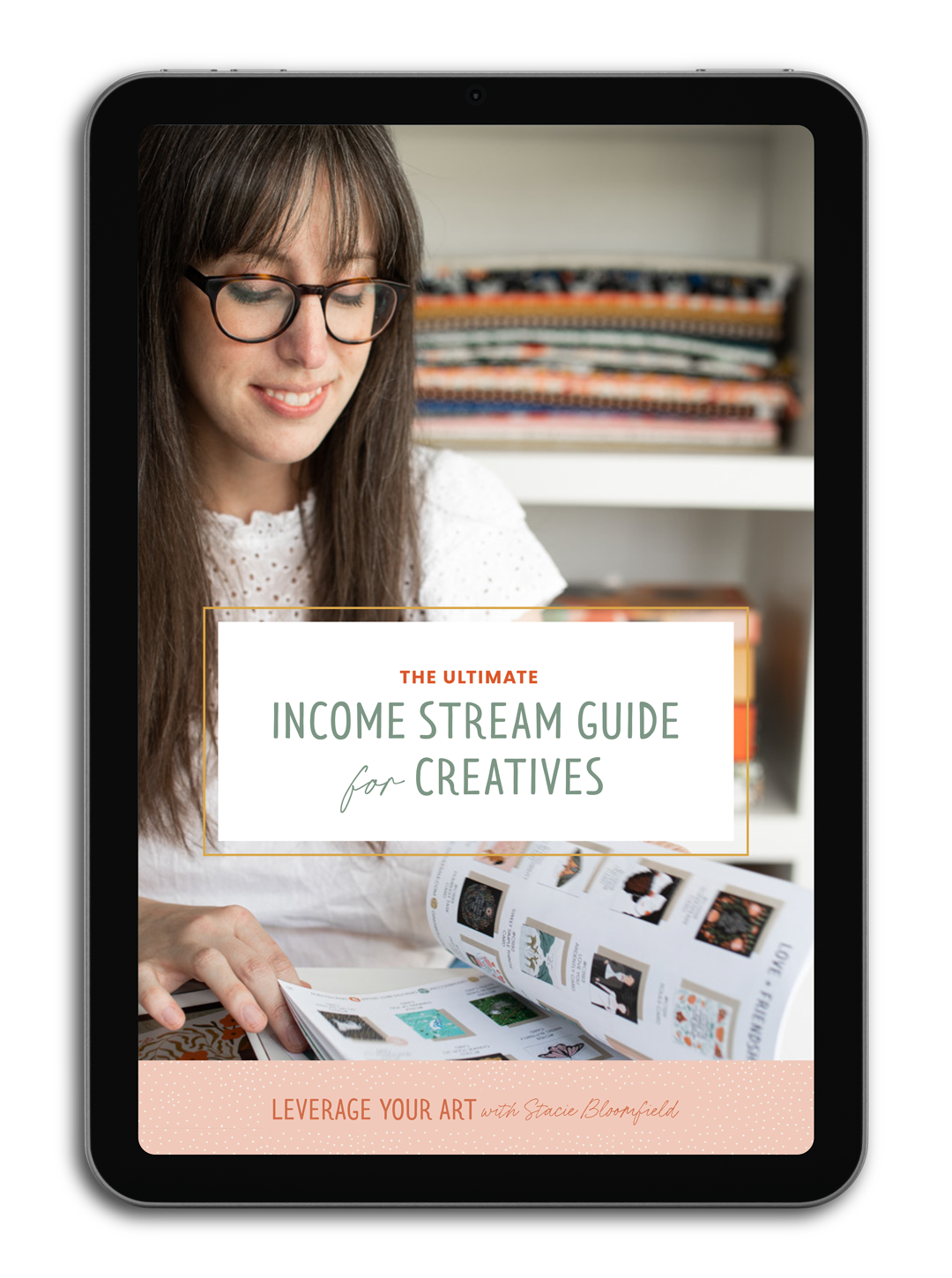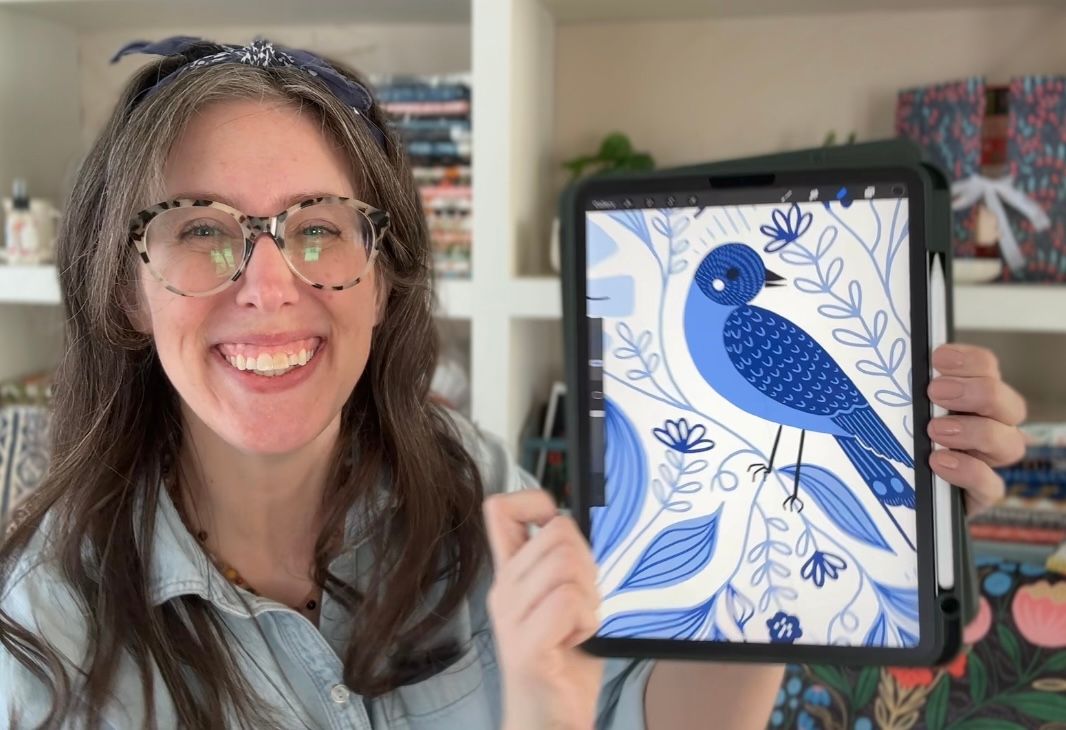PART 1: Exactly How I’d Build A Profitable Art Business From Scratch if I Were Starting In 2025
Let’s Play a Game…
You wake up tomorrow and — poof! — your art business is gone.
No followers.
No email list.
No stack of Gingiber tea towels delightfully perfuming homes across the country.
Just you, a blank notebook… and maybe a dusty laptop if you’re lucky.
What do you do next?
The 2025 Reset Question
A few weeks ago, I asked my audience:
“If I had to start over today in 2025 (versus 2009 when I launched my first Etsy shop)… what would you want to know?”
And WOW — you delivered.
Here’s just a sample of the questions I received:
-
“Top 5 things to accomplish in the first 90 days?” — @fuzzy.little.mangos
-
“Is there something you wish you had started from the get-go?” — @block21prints
-
“What would you start with—POD, wholesale, manufacturing?” — @wildlingstudio.co
Welcome to the Profitable Art Business Blog Series
I got so many good questions, I couldn’t fit them all into one post.
So I’m turning them into a new Sunday blog series called:
“If I Were Starting Over Today…”
Refill your mug. Get comfy.
This is the honest, no-fluff advice I wish someone had given me back in 2009.
@abigaildelaneystudio asks:
“What would you do differently if you were starting out today?”
Let’s Rewind to 2009
I’m sitting on a mattress on the floor of our new house in Springdale, Arkansas.
No furniture.
No art business.
Just a Sharpie, a manila envelope, and my husband gently saying:
“You should draw something. You’ll feel better.”
That doodle?
It became Gingiber—a brand that’s now sold millions of dollars in products across the country.
So… what would I do differently if I were starting in 2025, not 2009?
A Lot Has Changed.
But the Fundamentals? Still True.
Here’s what’s actually working right now in my business—and what I’d focus on from Day 1:
Weekly Newsletters
Not “when I remember.”
Not monthly.
Weekly. Like clockwork.
Your newsletter list is your most valuable asset.
Treat it like it’s your retirement plan—because it just might be.
Daily Social Posts That Spark Connection
Not just “content for the algorithm.”
Our best-performing posts are:
-
Community-driven
-
Shareable
-
Built for real conversations
If it doesn’t connect with actual human heartstrings?
It doesn’t make the cut.
Ad Spend (But Only After Something Works)
Yes, we run ads.
Yes, we spent over $500,000 last year. (And I remember the first $20 I ever spent.)
But here’s the truth:
Ads don’t fix broken offers.
They amplify working ones.
If you haven’t sold your product, art, or offer organically?
Don’t run ads. Yet.
Instead, meet your audience the old-fashioned way:
-
Local craft shows
-
Retailer pop-ups
-
Licensing your art
-
Collaborations and pitches
Real Talk That Most People Avoid
There’s no magic bullet.
You’ll either:
-
Invest time (Reels, carousels, showing your face)
-
Or invest money (ads, booths, teams, strategy)
Either path can work.
But hoping something magically takes off?
That’s not a plan. That’s a fantasy.
The Biggest Lesson I’ve Learned
You can be authentic
and move like a business.
So If I Were Starting Today?
No full plan.
No perfect branding.
No pretending to have it all figured out.
But I’d start showing up.
Start testing.
Start making noise.
Because motion beats perfection.
And the only way to build momentum…
Is to take the first step—even if you’re still sitting on the floor, holding a Sharpie.
@block21prints asks:
“Hi Stacie! Looking back to when you began, is there something you wish you had started from the get-go?”
My answer? A newsletter. Hands down.
And not just because Amy Porterfield says so.
Back then, I didn’t even think of the people seeing my work as customers.
I had art. I had an Etsy shop. And I truly believed:
“If I make good work, people will magically find it.”
Spoiler: They don’t.
You can have the most beautiful products in the world…
But if you don’t know how to talk about them—or get them in front of the right people?
You’re basically sitting alone in the world’s quietest shop.
What I Didn’t Know Then (But Do Now)
Every thriving solo art business I’ve seen runs on what I call:
The Artist’s Growth Trifecta
Make (your art) – The creative/product side: your actual body of work
Meet (your people) – The marketing side: building relationships with your audience
Move (like a business) – The systems side: pricing, fulfillment, and structure
Miss one? Your business wobbles.
Nail all three? You grow—intentionally and profitably. This is what I teach inside of my signature Art Business Course Leverage Your Art (enrollment opens every Fall)
So What Should You Do?
Start by getting really good at your craft.
Find your visual voice.
Pick your lane: Will you license your work? Sell products? Teach?
Then:
-
Build one simple offer
-
Talk about it
-
Share the story behind it
-
Invite people in
And above all?
Start before you feel ready.
Especially when it comes to your newsletter.
It’s the single most valuable business asset I wish I had built from day one.
Up Next: What Kind of Art Actually Sells?
This is one of the most-asked questions I got—and next Sunday, we’re diving all the way in.
Here’s a sneak peek:
It’s not about chasing trends.
It’s about clarity, connection, and knowing who your art is for.
We’ll talk about what’s working right now, in 2025, the art categories that consistently perform, and how to create work that’s both personal and profitable.
See you next Sunday, same time, same inbox.
(You won’t want to miss it.)
Until next time,
Stacie Bloomfield
Your Artist Squirrel Professor
StacieBloomfield.com needs the contact information you provide to us to contact you about our products and services. You may unsubscribe from these communications at anytime. See our privacy policy for terms and conditions and to learn how we protect your data.









